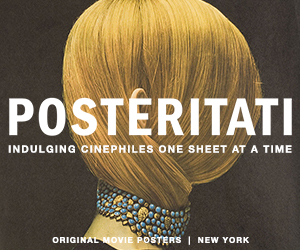Dallas Buyers Club has two things going for it: a compelling, based-on-fact source story and a deeply sympathetic cause. The movie doesn’t do much with either.
Matthew McConaughey – so gaunt and sickly that even his voice sounds sallow – plays Ron Woodroof, a Texas rodeo huckster who is diagnosed with AIDs in 1985 during the first wave of the crisis. Given 30 days to live and denied access to experimental drugs, Woodroof establishes an international, underground market for supplements, vitamins and harder substances not approved by the Federal Drug Administration.
Credit Dallas Buyers Club with holding off on the hero worship at least for a little bit. The movie is honest about the high-risk habits (drug use, unprotected sex with multiple partners) that expose Ron to the virus. And it doesn’t shy away from his homophobia, which rears its ugly head when the disease puts him in contact with many gay victims. Yet the picture heals him of such traits so quickly, it’s as if the character took some sort of magic pill between edits. (In general, the movie favors “3 months later” intertitles over story development.)
Consider his relationship with Rayon (Jared Leto), a cross-dressing AIDs patient Ron first encounters in the hospital. They’re forced to share a room, and at first Ron looks at Rayon’s heavy eye makeup with horror. Yet over a single card game, Ron goes from hurling slurs to a teasing friendship, one that will continue for the rest of the picture.
In general, the movie favors “3 months later” intertitles over story development.
That scene plays out like so many in Dallas Buyers Club: two seconds in, you see where things are going, so you sit back and dutifully watch the movie proceed in an insistent way. If it were a text, the film would be bolded, underlined and italicized – everything is right there on the surface, then emphasized for effect. Just when the director, Jean-Marc Vallee, offers a nice touch (the way Ron shakes his head at the potentially gay man who opens the door for him at a support group meeting), he follows it up with an unnecessary exclamation point (as when an exaggeratedly effeminate man approaches Ron inside the door of that meeting and tries to put his arm around him).
Vallee had his work cut out for him, as Craig Borten and Melisa Wallack have crafted a frustratingly disjointed screenplay. Dallas Buyers Club goes in so many different directions it’s hard to tell what the movie really wants to be about. Significant portions are set in the Dallas hospital where Ron is initially diagnosed (Jennifer Garner is very flat as an empathetic doctor). This thread is eventually dropped in favor of Ron’s personal health struggle, which is then forgotten in order to focus on his business scheme and the governmental efforts to stop it. We keep getting jerked back and forth among these and other subplots, and as a result we never get a fix on a focused antagonist. Is it the disease, the medical establishment or Ron’s own personal demons? The answer, of course, is all three, but Dallas Buyers Club isn’t accomplished enough to handle such a multilayered approach.
This structure also doesn’t serve McConaughey’s performance. Aside from the physical commitment, the actor brings a consistent swagger to the role, whether he’s flirting and hustling at the start or closing questionable business deals later. Yet the narrative keeps insisting on jarring inconsistencies, from Ron’s sudden, violent defense of Rayon wearing a dress in a grocery store to his Mission: Impossible moment posing as a priest while smuggling drugs over the Mexican border. Dallas Buyers Club gives us many elements of the Ron Woodroof story, but we never get a handle on the man himself – despite McConaughey’s willingness and ability to deliver.



